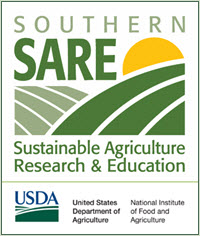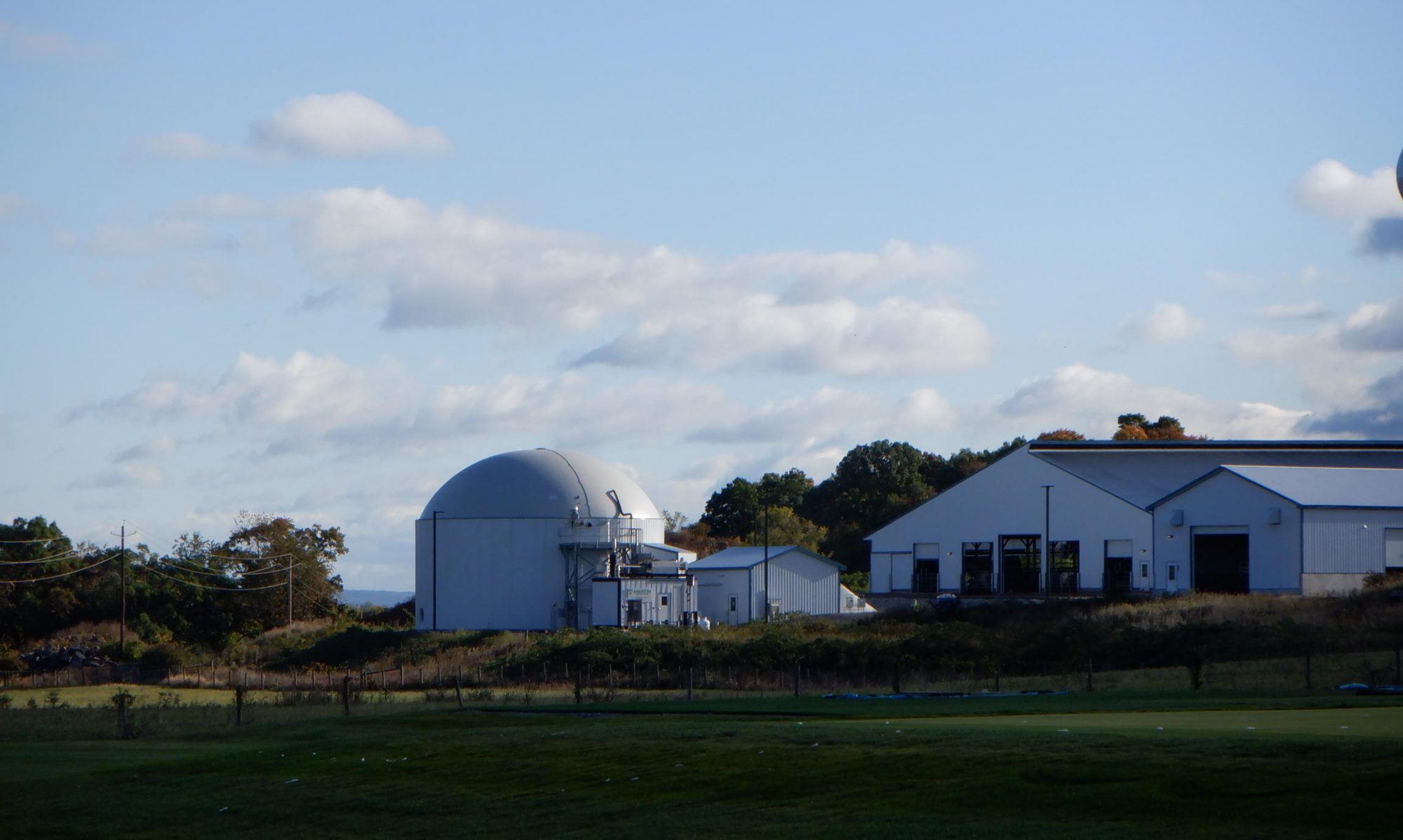
This curriculum was developed through a Southern SARE grant and collaboration between Tennessee State University, the University of Tennessee, eXtension.org, and USDA-Rural Development.
Link to the full TN Biomass Energy Training Curriculum (a 254 page downloadable PDF), or access as separate modules as listed below.
The Biomass Energy Training Curriculum for each topic area includes:
- Lesson Guide with Learning Objectives and information notes for each presentation slide.
- Slide presentation
- Factsheet and other educational materials
- Questions which can be used to test participants’ knowledge at the end of the presentation. This can be combined with clickers to improve audience engagement and create discussion
- Evaluation of the presentation.
Curriculum Sections
Part I. Introduction to Biomass Energy
- Module 1. State of the Energy Industry
- Module 2. Biofuel Feedstocks
- Module 3. Environmental Effects of Bioenergy Feedstocks
- Module 4. Laboratory Activities for Bioenergy Production
- Module 5. Anaerobic Digestion
Part II. On-farm Biodiesel Production
- Module 6. Biodiesel Production – Steps for Success
- Module 7. Agronomics of Sunflower and Winter Canola
- Module 8. Federal Assistance and Economics of On-Farm Biodiesel Production
- Module 9. How to Start a Cooperative
- Module 10. Rural Energy for America Program (REAP)
Part III. Native Warm-Season Grasses (NWSG) For Bioenergy and Forage Production
- Module 11. Types of Native Warm-Season Grasses for Bioenergy – Advantages and Disadvantages
- Module 12. Establishment and Management of NWSGs for Bioenergy and Forage
Part IV. Soil Health For Sustainable Agriculture
-
Module 13. Soil Health
References and Additional Resources
- Adler, P.R., S.J. Del Grosso, and W.J. Parton. 2007. Life-cycle assessment of net greenhouse-gas flux for bioenergy cropping systems. Ecological Applications 17(3):675-691. Available at: http://onlinelibrary.wiley.com/doi/10.1890/05-2018/epdf
- Ashworth, A., P. Keyser, F. Allen, G. Bates, and C. Harper. 2012. Intercropping legumes with native warm-season grasses for livestock forage production in the mid-South. University of Tennessee Extension, SP731-G. Available at: http://trace.tennessee.edu/cgi/viewcontent.cgi?article=1100&context=utk_agexani
- Basha, S.A., K.R. Gopal., and S. Jebaraj. 2009. A review on biodiesel production, combustion, emissions and performance. Renewable and Sustainable Energy Reviews 13:1628-1634.Available at: http://www.sciencedirect.com/science/article/pii/S1364032108001743
- Bansal, A., P. Illukpitiya, S.P. Singh, and F. Tegegne. 2013. Economic competitiveness of ethanol production from cellulosic feedstock in Tennessee. Renewable Energy 59:53-57. https://www.researchgate.net/publication/257415266_Economic_competitiveness_of_ethanol_production_from_cellulosic_feedstock_in_Tennessee
- Benson, G.A., and J.T. Green, Jr. 2013. Forage economics. North Carolina Cooperative Extension Service. Available at: http://content.ces.ncsu.edu/forage-economics
- Berglund, D.R. (ed.). 2007. Sunflower production. North Dakota State University Extension Service, A-1331. Available at: https://www.ag.ndsu.edu/extensionentomology/recent-publications-main/publications/A-1331-sunflower-production-field-guide
- Bhardwaj, H. Canola – biodiesel. Available at: http://www.learningace.com/doc/2578471/5a6a2b7473e6087a1e0cfc600b95a093/0922-1430-a3-bhardwaj
- Bhardwaj, H. 2007. Utilizing locally-produced canola to manufacture biodiesel. In J. Janick and A. Whipkey (eds.) Issues in new crops and new uses. ASHS Press, Alexandria, VA. https://hort.purdue.edu/newcrop/ncnu07/pdfs/bhardwaj43-46.pdf
- Biodiesel magazine. 2015. USA plants. Available at: http://www.biodieselmagazine.com/plants/listplants/USA/
- Braun, R., D. Karlen, and D. Johnson. 2011. Sustainable feedstocks for advanced biofuels. Sustainable alternative fuel feedstock opportunities, challenges, and roadmaps for six U.S. regions. Soil and Water Conservation Society, Ankeny, IA. Available at: http://www.swcs.org/en/conferences/specialty_conferences/sustainable_feedstocks_roadmap/
- Buntin, D., T. Grey, G.H. Harris, Jr., D. Phillips, E. Prostko, P. Raymer, N. Smith, P. Sumner, J. Woodruff. 2013. Canola production in Georgia. The University of Georgia Cooperative Extension, Bulletin 1331. Available at: http://extension.uga.edu/publications/files/pdf/B%201331_4.PDF
- Clarens, A.F., E.P. Resurreccion, M.A. White, and L.M. Colosi. 2010. Environmental life cycle comparison of algae to other bioenergy feedstocks. Environmental Science & Technology 44:1813-1819. Available at: http://pubs.acs.org/doi/pdf/10.1021/es902838n
- Collins, H.P., R. Boydston, A. Alva, A. Hang, S. Fransen, P. Wanderschnieder. Biofuel variety trials. Available at: http://www.pacificbiomass.org/documents/OilSeed/BiofuelsVarietyTrialsHalCollins.pdf
- Dale, B.E., B.D. Bals, S. Kim, and P. Eranki. 2010. Biofuels done right: land efficient animal feeds enable large environmental and energy benefits. Environmental Science & Technology 44(22):8385-8389. Available at: http://pubs.acs.org/doi/pdf/10.1021/es101864b
- Davison, B.H. 2015. Cellulosic biofuels: continued R&D challenges during pioneer biorefinery deployment. Oak Ridge National Laboratory. Available at: http://web.ornl.gov/sci/aiche/presentations/intro%20to%20bioenergy%20ORNL%20Davison%2011-18-15%20AIChE%20local%20r1%20Compatibility%20Mode.pdf
- Demirbas, A. 2009. Progress and recent trends in biodiesel fuels. Energy Conversion and Management 50:14-34. http://citeseerx.ist.psu.edu/viewdoc/download?doi=10.1.1.463.9156&rep=re…
- Dunford, N.T., and A. Su. 2010. Effect of canola oil quality on biodiesel conversion efficiency and properties. Transactions of the ASABE 53(3):993-997.
- Fike, J.H., D.J. Parrish, D.D. Wolf, J.A. Balasko, J.T. Green, Jr., M. Rasnake, J.H. Reynolds. 2006. Switchgrass production for the upper southeastern USA: influence of cultivar and cutting frequency on biomass yields. Biomass and Bioenergy 30:207-213. Available at: http://www.sciencedirect.com/science/article/pii/S0961953405001819
- Fore, S.R., P. Porter, and W. Lazarus. 2011. Net energy balance of small-scale on-farm biodiesel production from canola and soybean. Biomass and Bioenergy 35:2234-2244.
- George, N. and K. Tungate. Oilseed production for biodiesel in North Carolina. Available at: http://www.cefs.ncsu.edu/whatwedo/energy/nicholasgeorge.pdf
- Gerbens-Leenes, P.W., A.Y. Hoekstra, and T.H. van der Meer. 2008. Water footprint of bio-energy and other primary energy carriers. UNESCO-IHE Institute for Water Education. Value of Water Research Report Series No. 29. Available at: http://waterfootprint.org/media/downloads/Report29-WaterFootprintBioenergy.pdf
- Gerbens-Leenes, P.W., A.Y. Hoekstra, and T.H. van der Meer. 2009. The water footprint of bioenergy. Proceedings of the National Academy of Sciences 106(25):10219-10223. Available at: http://www.pnas.org/content/106/25/10219.full.pdf
- Godsey, C., R. Taylor, and M. Boyles. 2011. No-till winter canola considerations. Oklahoma Cooperative Extension Service, PSS-2153. Available at: http://canola.okstate.edu/ocesfactsheets/No-Till%20Winter%20Canola%20Considerations%20PSS-2153.pdf
- Gog, A., M. Roman, M. Toşa, C. Paizs, and F. Dan Irimie. 2012. Biodiesel production using enzymatic transesterification – current state and perspectives. Renewable energy 39:10-16.
- Jaeger, W.K., and R. Siegel. 2008. Economics of oilseed crops and their biodiesel potential in Oregon’s Willamette Valley. Oregon State University Extension Service, Special Report 1081. Available at: http://ir.library.oregonstate.edu/xmlui/bitstream/handle/1957/8503/SR_no.1081_ocr.pdf
- Karlen, D. L., P. G. Hunt and R. B. Campbell. 1984. Crop residue removal effects on corn yield and fertility of a Norfolk sandy loam. Soil Science Society of America Journal 48(4): 868-872.
- Keyser, P., C. Harper, G. Bates, J. Waller, and E. Doxon. 2011a. Native warm-season grasses for mid-South forage production. University of Tennessee Extension, SP731-A. Available at: http://nativegrasses.utk.edu/publications/SP731-A.pdf
- Keyser, P., C. Harper, G. Bates, J. Waller, and E. Doxon. 2011b. Establishing native warm-season grasses for livestock forage in the mid-South. University of Tennessee Extension, SP731-B. Available at: http://nativegrasses.utk.edu/publications/SP731-B.pdf
- Keyser, P., G. Bates, J. Waller, C. Harper, and E. Doxon. 2011c. Grazing native warm-season grasses in the mid-south. University of Tennessee Extension, SP731-C. Available at: http://nativegrasses.utk.edu/publications/SP731-C.pdf
- Keyser, P., G. Bates, J. Waller, C. Harper, F. Allen, and E. Doxon. 2011d. Producing hay from native warm-season grasses in the mid-South. University of Tennessee Extension, SP731-D. Available at: http://nativegrasses.utk.edu/publications/SP731-D.pdf
- Keyser, P., G. Bates, J. Waller, C. Harper, F. Allen, and E. Doxon Holcomb, D. McIntosh. 2015. Producing hay from native warm-season grasses in the mid-South. University of Tennessee Extension, SP731-D.
- Kumar, P., D.M. Barrett, M.J. Delwiche, and P. Stroeve. 2009. Methods for pretreatment of lignocellulosic biomass for efficient hydrolysis and biofuel production. Industrial & Engineering Chemistry Research 48(8):3713-3729. Available at: http://ucanr.edu/datastoreFiles/234-1388.pdf
- Ma, F., and M.A. Hanna. 1999. Biodiesel production: a review. Bioresource Technology 70:1-15.
- Magdoff, F., and H. van Es. 2009. Building soils for better crops. Sustainable Agriculture Research and Education (SARE) Program, SARE Outreach Publications, Brentwood, MD.
- McClure, M.A., F.L. Allen, R.D. Johnson, L.G. Heatherly. 2010. Sunflower: an alternative crop for Tennessee producers. UT Extension Publication, SP721. Available at: http://varietytrials.tennessee.edu/archivedpdfs/2009trialdata/sunflowers.pdf
- Mercker, D. 2007. Short rotation woody crops for biofuel. UT Extension, SP702-C. Available at: https://extension.tennessee.edu/publications/Documents/SP702-C.pdf
- Mitchell, R. 2011. Herbaceous perennials: placement, benefits, and incorporation challenges in diversified landscapes. In Braun, R., D. Karlen, and D. Johnson. 2011. Sustainable feedstocks for advanced biofuels. Sustainable alternative fuel feedstock opportunities, challenges, and roadmaps for six U.S. regions. Soil and Water Conservation Society, Ankeny, IA. Available at: http://www.swcs.org/documents/resources/Chapter_6__Mitchell__Herbaceous_Per_49DCB2E0820DF.pdf
- Mitchell, R., Vogel, K. P. and Sarath, G. 2008. Managing and enhancing switchgrass as a bioenergy feedstock. Biofuels, Bioproducts and Biorefining 2:530–539.
- NREL. 2014. The biofuels atlas. National Renewable Energy Laboratory. Available at: https://maps.nrel.gov/biofuels-atlas/
- Ozsezen, A.N., and M. Canakci. 2011. Determination of performance and combustion characteristics of a diesel engine fueled with canola and waste palm oil methyl esters. Energy Conversion and Management 52:108-116.
- Pahl, G. 2005. Biodiesel: growing a new energy economy. Chelsea Green Publishing Company, White River Junction, Vermont.
- Philipp, D., and J.A. Jennings. 2015. Management of hay production. University of Arkansas Cooperative Extension Service, MP434. Available at: http://www.uaex.edu/publications/pdf/mp434.pdf
- Schneiter, A.A., J.F. Miller, and D.R. Berglund. 2013. Stages of sunflower development. North Dakota State University Extension Service, A1145. Available at: https://www.ag.ndsu.edu/pubs/plantsci/crops/a1145.pdf
- Schumacher, J. 2007. Small scale biodiesel production: an overview. Agricultural Marketing Policy Center, Montana State University, Bozeman, MT. Available at: http://www.ampc.montana.edu/documents/policypaper/policy22.pdf
- Stamm, M., and S. Dooley. 2013. 2012 National winter canola variety trial. Report of Progress 1080, Kansas State University Extension Service, SRP1080. Available at: http://www.agronomy.k-state.edu/services/crop-performance-tests/documents/cotton-canola/2012-nvt.pdf
- Tennessee Valley Authority, Buffalo Mountain Wind Farm, https://www.tva.com/About-TVA/Power-out-of-Thin-Air
- West Tennessee Solar Farm, http://solarfarm.tennessee.edu/
- Tilman, D., R. Socolow, J.A. Foley, J. Hill, E. Larson, L. Lynd, S. Pacala, J. Reilly, T. Searchinger, C. Somerville, R. Williams. 2009. Beneficial biofuels – the food, energy, and environment trilemma. Science 23(5938):270-271. Available at: http://science.sciencemag.org/content/325/5938/270.full
- Trócsányi, Z.K., A.F. Fieldsend, and D.D. Wolf. 2009. Yield and canopy characteristics of switchgrass (Panicum virgatum L.) as influenced by cutting management. Biomass and Bioenergy 33:442-448. Available at: http://www.sciencedirect.com/science/article/pii/S0961953408002158
- U.S. Energy Information Administration, www.eia.gov
- U.S. Environmental Protection Agency, Renewable Fuel Standard Program, www.epa.gov/renewable-fuel-standard-program/
- USDA-ERS. 2012. Canola meal: supply and disappearance, U.S., 1991/92-2012/13. National monthly feedstuff prices. Available at: http://www.agronomy.k-state.edu/services/crop-performance-tests/documents/cotton-canola/2012-nvt.pdf
- USDA-NASS. 2012. 2012 Census of Agriculture. U.S. Department of Agriculture, National Agricultural Statistics Service, http://www.agcensus.usda.gov/Publications/2012/
- USDA-RD. 2016. Rural Energy for America Program (REAP). U.S. Department of Agriculture, Rural Development, http://www.rd.usda.gov/programs-services/rural-energy-america-program-renewable-energy-systems-energy-efficiency
- USDA-RD. 2016. Value-added producer grant. U.S. Department of Agriculture, Rural Development, http://www.rd.usda.gov/programs-services/value-added-producer-grants
- Warrick, B.E. Sunflower production guide. Texas A&M AgriLife Extension. Available at: http://sanangelo.tamu.edu/extension/agronomy/agronomy-publications/sunflower-production-guide/
- Weber, J.A., R.L. Myers, H.C. Minor. 1993. Canola: a promising oilseed. University of Missouri Extension, G4280. Available at: http://extension.missouri.edu/p/G4280
- Wilson, T.O., F.M. McNeal, S. Spatari, D.G. Abler, and P.R. Adler. 2012. Densified biomass can cost-effectively mitigate greenhouse gas emissions and address energy security in thermal applications. Environmental Science & Technology 46:1270-1277.
- Wolf, D.D., and D.A. Fiske. 2009. Planting and managing switchgrass for forage, wildlife, and conservation. Virginia Cooperative Extension, #418-013. Available at: http://pubs.ext.vt.edu/418/418-013/418-013.html
- Volkswagen Chattanooga Solar Farm, Phoenix Solar USA, http://www.phoenixsolar-group.com/business/us/en/about-us/news/detail.Volkswagen-Chattanooga-Powers-Up-Largest-Solar-Park-in-Tennessee.8abb13d2-81f4-405b-ae45-204e1a75320f.html

Curriculum Author Jason de Koff is an Associate Professor of Agronomy and Soil Science for Tennessee State University’s Department of Agricultural and Environmental Sciences. His research focuses on bioenergy crop production, with specific interests in switchgrass and winter canola production. His extension training programs and educational resources provide current bioenergy production information to producers. Find his latest on Twitter: @TSUBioenergy

These training resources [the curriculum, not the references and additional resources] are freely available for educational purposes under the terms of Creative Commons Attribution-NonCommercial-NoDerivatives 4.0 International License. Please provide attribution: The Biomass Energy Training Curriculum by Jason de Koff, Tennessee State University; funded by Southern SARE.
If you wish to adapt these curriculum materials for your own educational purposes, please contact the Curriculum Author for permission and files:

 Specialists from Tennessee State University, the University of Tennessee, eXtension.org, and USDA-Rural Development developed this Biomass Energy Curriculum, with funding from Southern SARE.
Specialists from Tennessee State University, the University of Tennessee, eXtension.org, and USDA-Rural Development developed this Biomass Energy Curriculum, with funding from Southern SARE.
The Sustainable Agriculture Research and Education (SARE) program’s mission is to advance—to the whole of American agriculture—innovations that improve profitability, stewardship and quality of life by investing in groundbreaking research and education. SARE is supported by the National Institute of Food and Agriculture (NIFA), USDA. www.sare.org.
